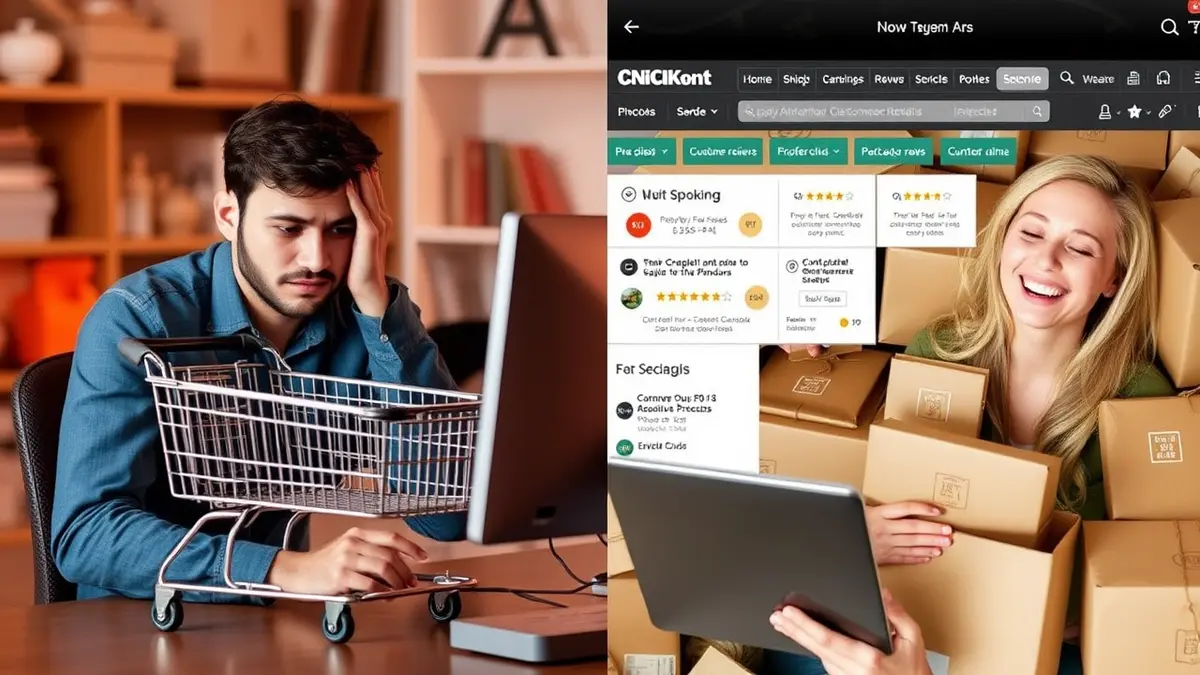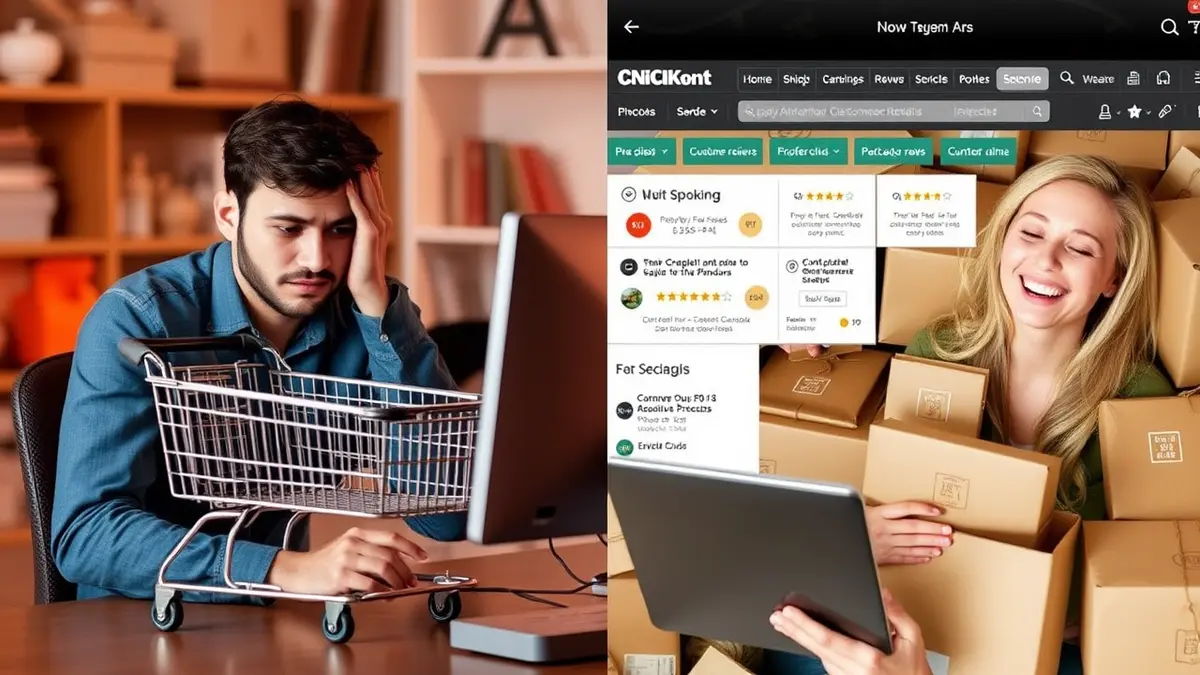Struggling to get eyes on your e-commerce site? You’re not alone. SEO (Search Engine Optimization) can feel like a dark art, but it's actually a set of very learnable—and implementable—strategies. This article breaks down the key areas to focus on right now to boost your online visibility and start attracting the customers you deserve.
What You’ll Learn
- Understand the foundational SEO elements that drive traffic
- Optimize your product pages for better search engine rankings
- Create compelling content that attracts and engages your target audience
- Leverage social media to amplify your SEO efforts
- Track your SEO performance and make data-driven adjustments
Let's dive in, shall we?
Understand the Foundational SEO Elements That Drive Traffic
Okay, before we get into the nitty-gritty, let’s cover the basics. Think of SEO as the engine that powers your website's visibility. Without fuel (i.e., optimization), you're not going anywhere fast. It's about making sure search engines understand what your site is about and value it enough to show it to potential customers.
Keywords: The Building Blocks
Keywords are the terms people use when searching for products or information online. Imagine someone searching for "comfortable men's running shoes." That's your keyword.
How to Find Them:
- Brainstorming: Put yourself in your customer's shoes. What would they type into Google?
- Keyword Research Tools: Use tools like Semrush, Ahrefs, or even Google Keyword Planner to uncover high-volume, low-competition keywords.
- Competitor Analysis: See what keywords your competitors are targeting. A TechCrunch piece last spring highlighted how crucial competitive keyword analysis is for emerging e-commerce brands.
Where to Use Them:
- Page Titles: Make sure each page has a unique, keyword-rich title.
- Meta Descriptions: These short descriptions appear under your page title in search results. Write compelling copy that includes your target keyword and entices people to click.
- Headings (H1, H2, H3): Use keywords naturally in your headings to structure your content and signal its relevance to search engines.
- Body Text: Weave keywords into your body text, but avoid "keyword stuffing" (overusing keywords to the point where it sounds unnatural).
- Image Alt Text: Describe your images using relevant keywords. This helps search engines understand what your images are about.
Site Structure: Make it Easy to Navigate
A well-structured website is like a well-organized store – easy to browse and find what you need. A clear site structure helps search engines crawl and index your pages effectively.
Key Elements:
- Logical Hierarchy: Organize your products and categories in a way that makes sense to users and search engines.
- Internal Linking: Link related pages together to help search engines discover and understand your content. Check out How to Find Trending Products Online Now for more on internal linking strategies.
- Sitemap: Create an XML sitemap and submit it to Google Search Console. This helps Google find and index all your pages.
- Mobile-Friendliness: In 2026, this isn't optional – it's essential. Ensure your website is responsive and looks good on all devices.
Actually, I think I remember that mobile-first indexing became the default years ago!
Page Speed: Don't Make People Wait
In the age of instant gratification, nobody wants to wait for a slow website. Page speed is a crucial ranking factor, and a slow site can lead to high bounce rates (people leaving your site quickly).
How to Improve Page Speed:
- Optimize Images: Compress images to reduce their file size without sacrificing quality.
- Enable Browser Caching: This allows users' browsers to store static content, so it doesn't have to be downloaded every time they visit your site.
- Minify CSS and JavaScript: Remove unnecessary characters from your code to reduce file sizes.
- Use a Content Delivery Network (CDN): CDNs distribute your website's content across multiple servers, so users can access it from a server that's geographically close to them.
Optimize Your Product Pages for Better Search Engine Rankings
Your product pages are the bread and butter of your e-commerce site. They're where potential customers learn about your products and decide whether or not to buy. Optimizing these pages is critical for driving traffic and sales.
High-Quality Product Descriptions
Forget generic manufacturer descriptions. Write unique, compelling product descriptions that highlight the benefits of your products.
Key Elements:
- Focus on Benefits: Don't just list features. Explain how your product will solve a problem or improve the customer's life.
- Use Keywords Naturally: Incorporate relevant keywords into your descriptions, but avoid sounding robotic.
- Write for Your Audience: Use language that resonates with your target audience. Are you selling to tech-savvy millennials or budget-conscious parents?
- Include High-Quality Images and Videos: Visuals are essential for showcasing your products. Use multiple high-resolution images and videos to give customers a clear sense of what they're buying.
Reviews and Ratings: Social Proof Matters
Reviews and ratings are powerful forms of social proof. They can significantly influence a customer's decision to buy.
How to Encourage Reviews:
- Ask for Reviews: Send follow-up emails after a purchase asking customers to leave a review.
- Make it Easy: Provide a direct link to the review form.
- Respond to Reviews: Acknowledge both positive and negative reviews. This shows that you care about your customers' feedback.
Schema Markup: Help Search Engines Understand Your Content
Schema markup is code that you can add to your product pages to provide search engines with more information about your products. This can help your pages rank higher and display rich snippets in search results (e.g., product price, availability, reviews).
Types of Schema Markup:
- Product Schema: Provides information about your product, such as its name, description, price, and availability.
- Review Schema: Displays your product's reviews and ratings in search results.
- Offer Schema: Shows the price and availability of your product.
Create Compelling Content That Attracts and Engages Your Target Audience
Content is king (still!). Creating valuable, engaging content is a great way to attract your target audience, establish yourself as an authority in your niche, and boost your SEO.
Blog Posts: Share Your Expertise
Blogging is a fantastic way to share your expertise, answer common customer questions, and attract organic traffic to your website.
Blog Post Ideas:
- Product Guides: Create in-depth guides on how to use your products.
- "How To" Articles: Write articles that solve common problems related to your products or industry.
- Industry News: Share your thoughts and insights on the latest industry trends. Consider the insights in "What's trending on TikTok right now 2026" for content inspiration.
- Customer Stories: Feature customer success stories to showcase the value of your products.
Videos: Engage Your Audience Visually
Video is a highly engaging content format that can capture attention and convey information effectively.
Video Ideas:
- Product Demos: Show how your products work in action.
- Tutorials: Provide step-by-step instructions on how to use your products.
- Customer Testimonials: Feature happy customers sharing their experiences with your products.
- Behind-the-Scenes: Give viewers a glimpse into your company culture and operations.
Infographics: Present Data Visually
Infographics are a great way to present data and information in a visually appealing and easy-to-understand format.
Infographic Ideas:
- Industry Statistics: Share interesting statistics related to your industry.
- Product Comparisons: Compare your products to competitors' products.
- "How To" Guides: Create visual guides on how to perform specific tasks.
Leverage Social Media to Amplify Your SEO Efforts
Social media isn't a direct ranking factor, but it can indirectly boost your SEO by driving traffic to your website, increasing brand awareness, and building backlinks.
Share Your Content
Share your blog posts, videos, and infographics on social media to reach a wider audience.
Tips for Sharing:
- Use Eye-Catching Visuals: Use images and videos to grab attention in the newsfeed.
- Write Compelling Captions: Entice people to click on your links.
- Use Relevant Hashtags: Help people discover your content.
Engage With Your Audience
Respond to comments and questions, participate in relevant conversations, and run contests and giveaways to engage your audience.
Why Engagement Matters:
- Builds Relationships: Fosters loyalty.
- Increases Brand Awareness: Gets your name out there.
- Drives Traffic: Encourages people to visit your website.
Build Backlinks
Backlinks are links from other websites to your website. They're a crucial ranking factor, as they signal to search engines that your website is valuable and trustworthy.
How Social Media Helps:
- Content Promotion: Sharing your content on social media can increase the chances of other websites linking to it.
- Influencer Outreach: Connect with influencers in your niche and ask them to share your content.
- Guest Blogging: Write guest posts for other websites and include a link back to your website in your author bio.
Track Your SEO Performance and Make Data-Driven Adjustments
SEO is an ongoing process. It's not something you can set and forget. You need to track your performance, analyze your results, and make adjustments based on the data.
Google Analytics: Your Go-To Tool
Google Analytics is a free web analytics tool that provides valuable insights into your website traffic, user behavior, and conversions.
Key Metrics to Track:
- Organic Traffic: The number of visitors who come to your website from search engines.
- Bounce Rate: The percentage of visitors who leave your website after viewing only one page.
- Time on Page: The average amount of time visitors spend on a page.
- Conversion Rate: The percentage of visitors who complete a desired action, such as making a purchase or signing up for a newsletter.
Google Search Console: Insights From Google
Google Search Console is a free tool that provides insights into how Google sees your website.
Key Features:
- Performance Reports: See how your website is performing in search results.
- Index Coverage: Identify any issues that are preventing Google from indexing your pages.
- Sitemap Submission: Submit your sitemap to Google.
- Mobile Usability: Check if your website is mobile-friendly.
Keyword Ranking: Monitor Your Progress
Track your keyword rankings to see how your SEO efforts are paying off. Use a keyword tracking tool like Semrush or Ahrefs to monitor your rankings over time.
What to Do With Ranking Data:
- Identify Opportunities: See which keywords you're ranking well for and focus on optimizing those pages further.
- Identify Problems: See which keywords you're not ranking well for and identify potential issues (e.g., lack of content, poor on-page optimization).
- Track Progress: Monitor your rankings over time to see if your SEO efforts are working.
Okay, that's a lot to take in, I know! But trust me, by implementing these SEO strategies, you can significantly improve your website's visibility, attract more traffic, and drive more sales. And hey, while you're at it, why not bookmark Wishmerge’s Ultimate Guide to Finding Unique Gifts Now for some gift inspiration?






